

Lying in Central Europe, the landlocked nation of Hungary borders Slovakia, Romania, Serbia, Croatia and Austria. It has a high-income, export-oriented economy driven by the services sector, which contributes around 60 per cent to its GDP. The manufacturing industry rests on food processing, automobiles, pharmaceuticals, metallurgy, machinery and chemicals.
Hungary is the biggest producer of electronics in Eastern Europe and scientific research boosts economic growth. In the past decade, Hungary has evolved into a major hub of information technology. It enjoys a considerable trade surplus and has trade ties with Germany, Romania, France, Italy, Britain and Czech Republic.
It also has a flourishing tourism sector attracting more than 16 million tourists each year. Though it does not have seaports, the inland transportation network is well-developed. Hungary has two rivers, the Danube and the Tisza. The whole country lies in the drainage basin of the Danube that flows through its centre. Let us explore the six major river ports of Hungary.
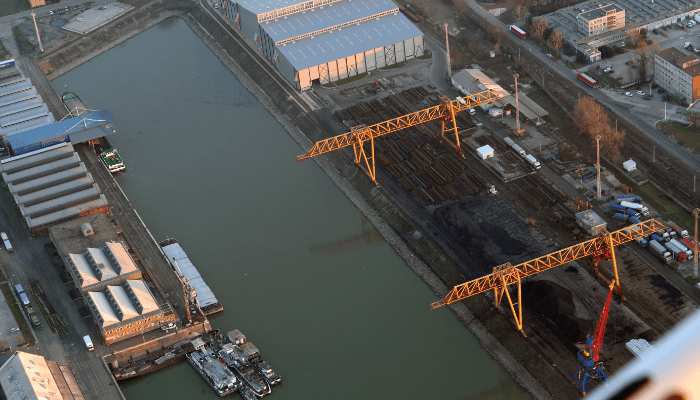

The principal port of Hungary, Budapest or the Csepel Freeport lies on the river Danube and is just 450 kilometres from the Italian port of Trieste. It is equipped to handle dry cargo, containers, breakbulk, RORO, refined petroleum products and crude oil. More than 2000 ships carrying 1,200,332 tonnes of cargo visited the port in 2021.
The city of Budapest got its name in 1873 after the towns of Buda and Obuda were merged into one administrative province. Budapest is also one of the most beautiful cities in Europe and houses the biggest UNESCO World Heritage Sites. It also contains the world’s second-oldest underground railway network, more than 70 geothermal springs and a parliament building that played a prominent role in the nation’s history.
People have lived in Budapest for thousands of years and the earliest evidence of human occupation dates back to the New Stone Age. It was once a Roman military camp and a trading post of the Ottomans in the 16th century. The Austrian Habsburg Empire established a port in Budapest after gaining control of the city and transformed it into a German centre of trade in the 18th century.
Port Specifications
Csepel port covers a total area of 108 hectares and has three basins, 18 berths and a separate RORO port for dealing with cars, trucks and other equipment. There is a shipbuilding yard close to the multipurpose terminal, engaging in the maintenance and repair of marine vessels weighing not more than 30,000 DWT.
Budapest port has 11.5 hectares of covered storage area and 23 hectares of open storage yards. It also has a three thousand square metre customs warehouse and two silos for keeping 2600 m3 of animal fodder.
Container terminal
Situated at the confluence of the region’s main trade routes, Csepel port offers world-class facilities and logistics-related services. Its container terminal is the only facility in the country capable of water-side loading of containers. The container freight station has 890 reefer connections, a 3200 m2 paved area and offers container maintenance, repair, stuffing, and stripping services.
Agroterminal
The port’s Agroterminal handles agricultural products and stores grains and cereals. It has three berths located on the northern part of the commercial basin which also provides loading and unloading services from ships to trucks and rails.
The cereals are stored in the MAHART granary building owned by Freeport of Budapest Logistics Limited. With a 30,000-tonne storage capacity, the granary uses modern temperature control technologies for keeping the produce pest-free.
Multipurpose terminal
Ferroport Limited handles breakbulk like iron and steel, aluminium, grains, soya bean meal, and other perishable items. This facility spans 4.5 hectares of the land area including 6 berths for accommodating general cargo vessels. Sometimes, it may also handle project cargo and other machine parts. Although most operations are available, the terminal does not handle RORO and containers.
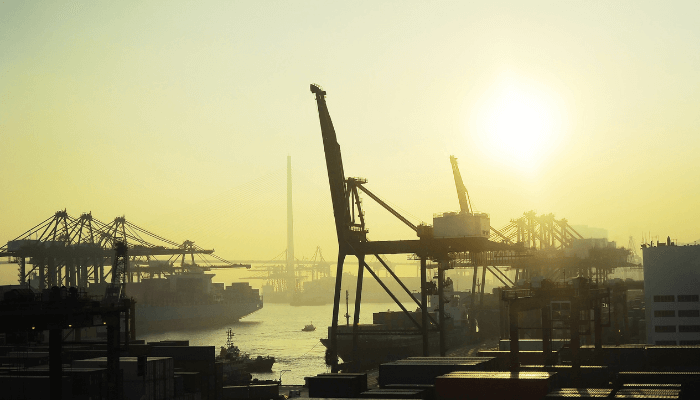

An industrial centre situated some 40 miles from Budapest, Dunajvaros lies in the central part of Hungary on the right bank of the Danube river. A relatively new city, it was populated in the 1950s after the advent of industrialisation in the region under the Soviet regime. Today, Dunaujvaros port mainly serves the region’s steelworks and more than 10 per cent of the total grain exports of Hungary pass through it.
The port was established in 1999 and handles break bulk and dry cargo such as grains, cement, raw material etc. It covers 52,203 m2 of land area including a multipurpose terminal with a quay length of 170 metres and an alongside depth of 8 m.
In 2021, the port handled 140,000 tonnes of cargo. Dunaujvaros is also an important transhipment centre for goods destined to neighbouring countries. The port has an annual loading capacity of 300,000 tonnes.
It has a grain hopper divided into four sections by movable separation walls. Controlled by the latest matrix technology, it can store up to 6300 tonnes of bulk cargo at once. Hungarian ports boast unique loading technologies which are not found in their European counterparts.
For instance, the Dunaujvaros port has a mobile bridge-like structure installed on its wharf parallel to the ships. Hence the ship does not need to be shifted while loading and unloading operations.
Containers, RORO and bagged cargo are not dealt with at this port. It has 10,000 m2 of open storage yards and 5 silos with a 25,000-tonne capacity. Close to the port entrance is the wastewater treatment plant. Bunkering facilities are available as well as provisions for the supply of freshwater to all port berths.
The city is also a famous tourist spot known for its museums, sports complexes, bars, restaurants, scenic beauty, biological reserve, the garden of Roman ruins, mediaeval churches, thermal baths, herbal spas and much more.
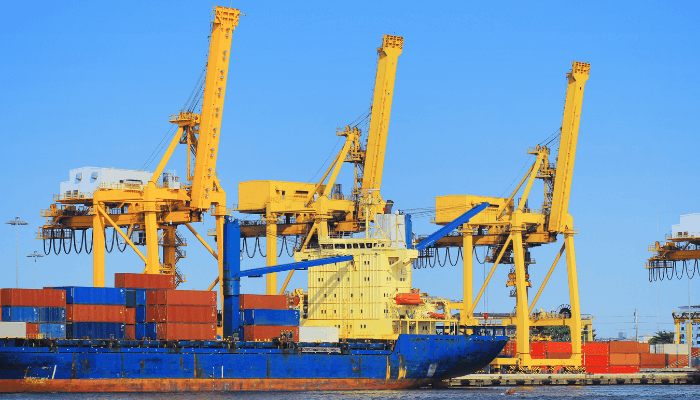

Situated in the heart of Europe, just 30 kilometres from the border of Serbia, Baja is one of the busiest ports in Hungary. Its favourable geographical position on the left bank of the Danube allows it to function as an intermodal hub and a key transportation centre in the whole Bacska region. It is also linked to the inland waterways of the North and the Black Sea. Approximately 581,369 tonnes of cargo and 8000 TEUs were handled at the port in 2021.
Baja lies in one of the most prosperous agricultural zones of the country and plays a significant role in the food and light industrial sector. The city offers exciting opportunities for new businesses and has a growing financial and tourism sector.
The port covers 208, 794 m2 of land area and is adjacent to the Industrial Park. It has nine specialised berths connected with roads and railways. A Green terminal collects ship waste like bilge water, dead oil, storage battery etc and provides freshwater facilities and electricity supply. It also houses a logistics centre for its clients providing an array of services like container tracking, warehousing, customs, ship repairing, forwarding, etc.
It has a bulk terminal specialising in handling cereals and bulk grains with a 200-tonne loading capacity per hour. 2 steel silos with a 1000 tonne capacity are used for storing premature crops. Three flat storage tanks with a 1500 tonne capacity are used for storing grains. Adjacent to this terminal is berth no 8, which deals with piece goods such as wood. It is also equipped to handle gravel, stone and sand.
Oilseeds and grains are shipped to neighbouring regions on river barges. The port has trade relations with African countries, Asia and Europe.
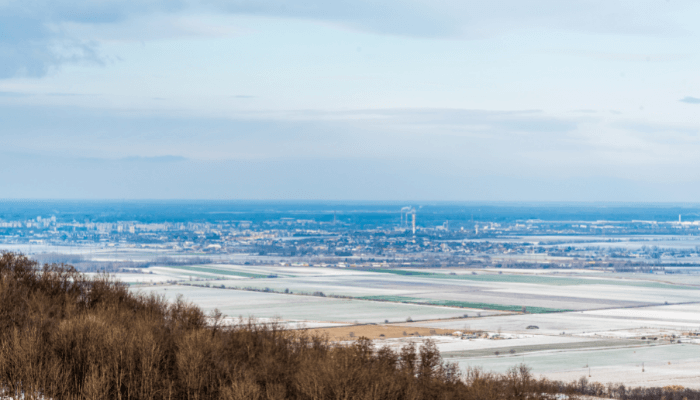

Located on the right bank of the Danube River, the Gyor Gonyu port lies at the confluence of numerous national transit railways and the mainline of the regional expressway network. It is the biggest intermodal logistics hub in the western Transdanubia region and is directly linked to the European main road E60 and the E75 Helsinki-Athens and Ystad-Rijeka road networks. It is strategically located on the common waterway of Europe which allows it to handle about 4,410,906 tonnes of cargo annually.
The port was opened in 1992 to meet the increasing demands of Hungary’s agricultural and manufacturing sectors. Today, it covers 110 hectares of land area and has 28,000 m2 of anchorage for ships and fishing vessels.
Port Specifications
It contains a coastal wall measuring 690 m and 5 specialised wharves for dealing with general cargo, breakbulk and dry cargo. The loading area covers 9000 m2 and the RORO berth has a unique automated ramp control system with a loading capacity of 65 tonnes. An 11,000 m2 area is dedicated to car and truck parking. Three buildings covering 600 m2 each are situated close to the storage terminal.
Berth 1 handles bulk such as soybeans, maize, wheat, fertilisers, sand, gravel, scrap iron and lorries. Iron rings, steel coils, piles and transformers are dealt with at the second berth. The container wharf has 450 reefer connections for dealing with container goods. Project cargoes like Wind turbine blades, power plant generators, profile irons etc are handled at the fourth wharf. Berth 5 handles heating oil, diesel oil, corn oil, linseed oil and wine spirit. The sixth wharf is dedicated to bagged cargoes and offers bagging and foiling services, palletising and unit cargo training.
It is equipped with three bucket mobile loaders with a mechanical loading capacity of 150 to 200 tonnes per hour, two forklifts, three telescopic loaders, three crop slides, two bridge scales and a mobile crane. It has a floating machine for loading dangerous liquid cargo.
Storage areas include two 6200 m2 warehouses with a 10,000-tonne capacity, 3 silo tanks and a 67,000 m2 open storage yard.


Komaram port spans 24,780 m2 of land area and has a 935 m long shoreline connected to the Danube. It has three berths for receiving cargo carriers and passenger ships. It is a major port in Hungary handling dry cargo and bulk goods. Located close to Vienna, Bratislava and Budapest, it also serves as a regional distribution hub.
Bulk goods are unloaded by means of a slip or a flow scale attached to a conveyor belt system with a flexible tube at the end. Adjacent to the port is the Industrial park housing national and international businesses and shipping agencies.
Lying in the immediate vicinity is the Danube bridge used for transporting international freight traffic. The freight station is linked to the Vienna-Budapest line and connects Hungary with Slovakia.
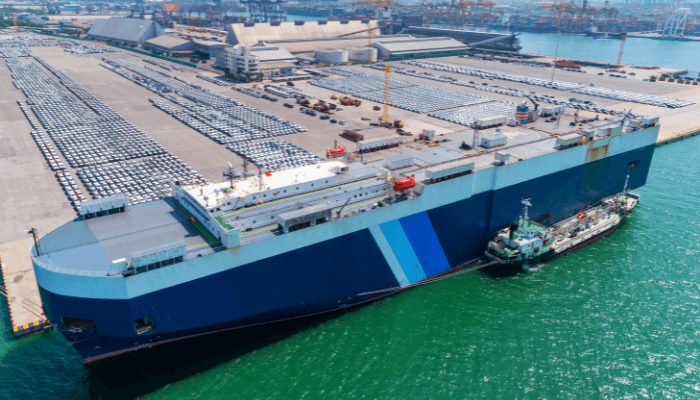

Nyergesujfalu port lies on the southern bank of the Danube and spans 39,510 m2 of area. It contains a RORO Port which also receives general cargo vessels and hotel boats. Presently, the port operations comprise the loading and unloading of vehicles.
A modern port, endowed with the latest technologies, it performs a unique function on the central and eastern sections of the Danube by serving businesses, especially the IT industry located nearby. It also reloads agricultural machines and other project cargo such as machine parts and rubber-wheeled construction machinery weighing around 12 tonnes.
The oversized cargoes are lifted using 2 mobile cranes, electrical grabs and gantries. It has snow blowers, salting machines and snow ploughs that ensure smooth operations during harsh winters. A 120 HP tractor with a hydraulics system tows inoperative vehicles and non-mobile machines.
Disclaimer: The authors’ views expressed in this article do not necessarily reflect the views of The Marine Learners. Data and charts, if used, in the article have been sourced from available information and have not been authenticated by any statutory authority. The author and The Marine Learners do not claim it to be accurate nor accept any responsibility for the same. The views constitute only the opinions and do not constitute any guidelines or recommendation on any course of action to be followed by the reader.
The article or images cannot be reproduced, copied, shared or used in any form without the permission of the author and The Marine Learners.










We believe that knowledge is power, and we’re committed to empowering our readers with the information and resources they need to succeed in the merchant navy industry.
Whether you’re looking for advice on career planning, news and analysis, or just want to connect with other aspiring merchant navy applicants, The Marine Learners is the place to be.